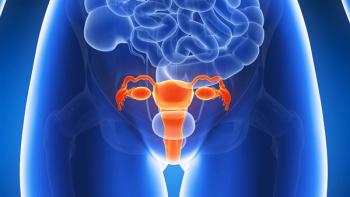
Decline in HPV-Associated Cervical Cancer Informs Screening, Vaccination Efforts for Other Virus-Caused Diseases
While HPV-related cervical cancer incidence is declining, other tumors related to the virus persist.
Guidance on screening and human papillomavirus (HPV) vaccination led to a decline in HPV-related cervical carcinoma. However, other virus-caused cancers – that don’t have has clear screening guidelines – are on the rise in both men and women, according to evidence from a population-based study.1,2
“In young women, cervical carcinoma is decreasing consistently with screening, and possibly vaccination, at the population level,” lead author Cheng-I Liao, MD, of Kaohsiung Veterans General Hospital in Kaohsiung, Taiwan, said during a presentation of the data during a media briefing leading up to the American Society of Clinical Oncology (ASCO) 2021 Annual Meeting.
HPV is associated with more than 90% of cervical and anal cancers and 60% to 75% of oropharyngeal, vulvar, vaginal, and penile tumors.3 The purpose of the study was to assess trends in the incidence of HPV-associated cancer using the United States Cancer Statistics Database from 2001 to 2017.
In the 17-year timeframe, there were 657,317 cases of cancer, 393,298 (60%) of which were in women. The most commonly occurring cancer in female patients was cervical carcinoma (52%). In men (n = 264,019), the most common malignancy was oropharyngeal squamous cell carcinoma (SCC; 80%), which represents a 5-fold higher incidence compared with women.
Over the study period, cervical cancer incidence decreased by 1.03% per year (P <.05), but this rate was significantly higher in patients aged 20 to 24 years who saw a much greater decrease in disease incidence, at 4.63% per years. Similar effects were seen in women over the age of 65, who saw a greater than 2% incidence decline over the study period (P <.05). The investigators said this is likely due to the effects of HPV vaccination and screening.
However, other HPV-related cancers without standardized screening guidelines saw increases over the study period, with a 2.71% incidence rise per year in men and a 0.77% increase in women. Other HPV-associated cancers included anal and rectal SCC, oropharyngeal SCC, penile cancer, vulvar SCC, and vaginal SCC.
In women over the age of 50, the annual percentage change in the incidence of anal and rectal SCC was 3.55% (P <.001). When compared with the 1.53% decline in the incidence of cervical cancer in the same patient population (P <.001), trends suggest that HPV-related anal and rectal SCC will surpass its incidence in the coming decade, and likely in the next 5 years.
“The decrease in cervical cancer is welcome news and may reflect intensive efforts to screen and vaccinate patients at risk,” ASCO President Lori J. Pierce, MD, FASTRO, FASCO, said in a press release. “Clearly, this study shows that we still have a great deal of work to do in order to reverse the increasing incidence rates of other HPV-related cancers.”
The investigators plan to gather information from other databases about the rate of HPV testing and vaccination. Additional research will be necessary to tackle a lack of disease screening and vaccination recommendations for HPV-associated cancers other than cervical.
References
1. HPV associated cancers in the US over the last 17 years – has screening or vaccination made any difference? Presented at: 2021 ASCO Annual Meeting Virtual Embargoed Presscast; May 19, 2021; Virtual.
2. With Strong Screening and Vaccination Guidelines, Cervical Cancer Rates Drop; Other HPV-Related Cancers Are on the Rise. News release. American Society of Clinical Oncology. May 19, 2021. Accessed May 19, 2021. https://bit.ly/3ylfjJ1
3. Saraiya M, Unger ER, Thompson TD, et al. US assessment of HPV types in cancers: implications for current and 9-valent HPV vaccines. J Natl Cancer Inst. 2015;107(6):djv086. doi:10.1093/jnci/djv086
Newsletter
Knowledge is power. Don’t miss the most recent breakthroughs in cancer care.
















































































